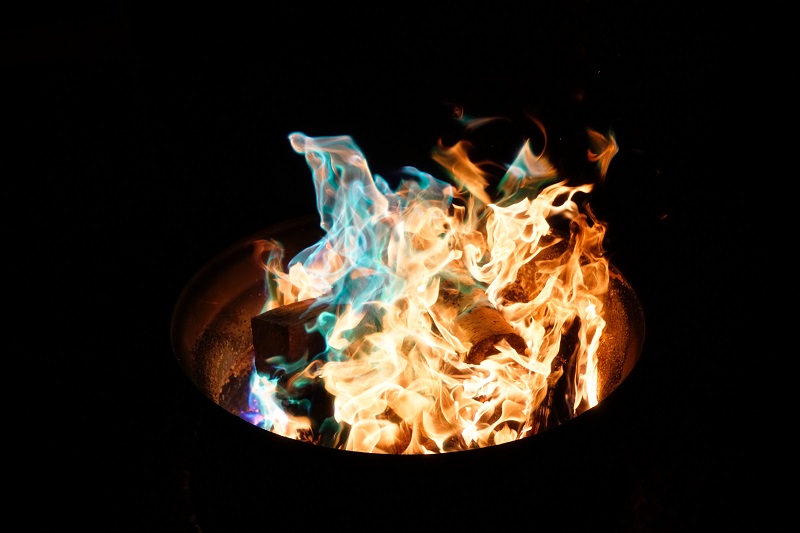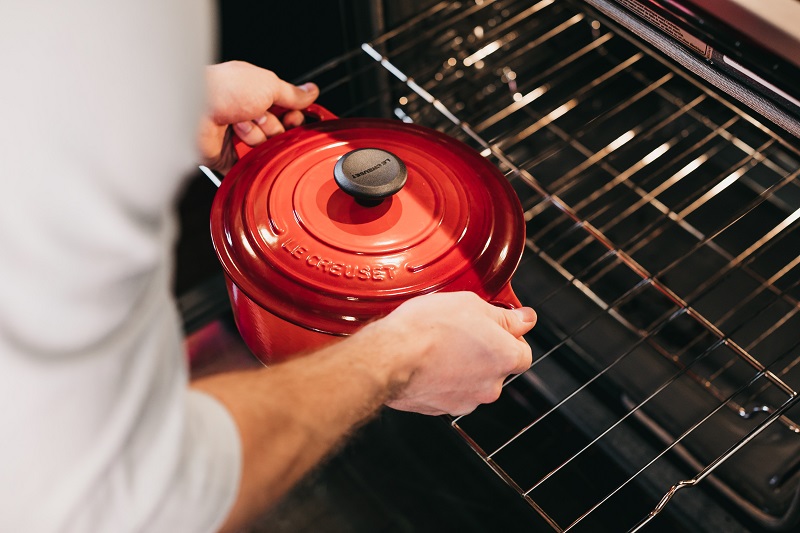What is the difference between dry heat sterilization and moist heat sterilization?
Sterilization is a key process of killing, inactivating, or removing microorganisms from products and surfaces. In precise, it is the killing of all forms of life such as bacterial spores, prions, and viruses.
The main difference between dry heat and moist heat sterilization is that dry heat sterilization refers to sterilization under high temperature in dry conditions whereas moist heat sterilization refers to sterilization under high temperature and pressure generated from steam water.
Comparison Table: Dry Heat Sterilization vs Moist Heat Sterilization
| Basic Terms | Dry Heat Sterilization | Moist Heat Sterilization |
| Meaning | It is a method of sterilization that uses high temperature in a dry condition | It is a method of sterilization that uses high temperature and pressure generated by water steam |
| Type of Heat | Dry heat | Moist heat |
| Type of condition | Dry condition | Wet conditions |
| Main Method | Hot air oven, flaming, incineration | Boiling, pasteurization, steam under pressure and stream at atmospheric pressure |
| Killing Effect | Oxidative damage, protein denaturing and toxic effect of elevated level of electrolysis | Denaturing and coagulation of proteins |
| Most Effective Method | Hot air oven | Autoclave |
| Time Taken for Sterilization | More time | Less time |
| Requirements | No water and steam | Water and steam |
| Helpers | Chemical bonds in microbes and oxidation of proteins | Coagulation of proteins |
| Main Advantage | Harmless to the environment | Low cost, easy to control and non-toxic |
What Is Dry Heat Sterilization?
Dry sterilization is a method of sterilization that uses high temperatures in dry conditions to kill microorganisms causing diseases.
The heat used in sterilization is supplied in the form of direct flame or hot air. It is the oldest technique of sterilization and it requires a lot of time.
The microorganism causing diseases are killed by the oxidation of the chemical bonds and their proteins. The sterilization tends to be harmless to the environment.

What Are the Advantages of Dry Heat Sterilization?
- Tend to be non-toxic and reliable
- Low cost and easy to install
- No chances of corrosion
- Tend to be eco-friendly
- It penetrates materials effectively
What Are the Disadvantages of Moist Heat Sterilization?
- Takes more time for sterilization
- Exposing the instrument to a higher temperature is dangerous
- Require extremely high temperature
What Is Moist Heat Sterilization?
Moist heat sterilization is the method of sterilization that uses high temperatures and pressure generated by water and steam. The main aim is to kill microbes causing diseases.
The main significance of moist heat sterilization is to sterilize culture media. It is quite effective when compared to dry heat sterilization.
The sterilization process takes the shortest time possible but it leads to corrosion after completion of the process.
However, it is easy to control, non-toxic, and low cost. It is the reason for their popularity in the world.

What are the Advantages of Moist Heat Sterilization?
- Take less time to sterilize
- Require low temperature
- Easy to monitor and control
- Low cost and non-toxic
What are the Disadvantages of Moist Heat Sterilization?
- Cannot sterilize the heat-sensitive instrument
- Lead to corrosion after sterilization
- Repeated exposure of instrument can lead to damage
Main Differences between Dry Heat and Moist Heat Sterilization In Point Form
- Dry heat sterilization is a method of sterilization that uses high temperature in dry conditions whereas moist heat sterilization uses high temperature and pressure generated by steam water
- Type of heat in dry heat sterilization is dry heat while that of moist heat sterilization is moist heat
- Dry heat sterilization occurs in dry conditions while moist heat sterilization occurs in wet conditions
- Dry heat sterilization is harmless to the environment whereas moist heat sterilization is less costly and non-toxic
- The helpers of dry heat sterilization are the chemical bonds in microbes and oxidation of proteins while in moist sterilization is the coagulation of proteins
- Moist heat sterilization requires the use of steam and water whereas dry heat sterilization does not require water or steam
- Dry heat sterilization takes a lot of time whereas moist heat sterilization takes a shorter time
- The method of dry heat sterilization is quite effective in hot oven air whereas in moist sterilization in an autoclave
- The killing effect of dry heat sterilization is oxidative damage, protein denaturing, and toxic effect whereas moist heat sterilization is denaturing and coagulation of proteins.
- The main method of dry heat sterilization is hot air oven and incineration while that of moist heat sterilization is boiling and pasteurization
Frequently Asked Questions
- Is Moist Heat Better Than Dry Heat?
Moist heat sterilization penetrates deeper into the tissues making it more effective than dry heat sterilization. It also takes a shorter period than dry heat.
- When Should You Use Moist Heat?
Immediately after exercises. Research shows that moist heat immediately after exercise was more effective than dry heat just after exercise.
- Why Is Dry Heat Bad For Muscles?
They leave the skin dehydrated. This happens so since dry heat like electric heating pads and saunas draw moisture from the body.
- What Does Moist Heat Do For Muscles?
Aid in the heat penetration into the muscles. Hence, some people feel that moist heat provides better pain relief.
You May Also Like:
- Difference between XLS and XLSX
- Difference between CRT and LCD
- Difference between X-Ray and MRI
- Twisted Pair Cable Vs Coaxial Cable Vs Fiber Optic Cable
Comparison Video
Summary
The two methods of sterilization are highly acceptable and can be used to sterilize instruments. The core difference between moist heat and dry heat sterilization is based on the type of condition.
More Sources and References
- Moist Heat Sterilization. Wikipedia
- Dry-Heat Sterilization. Microbe Online